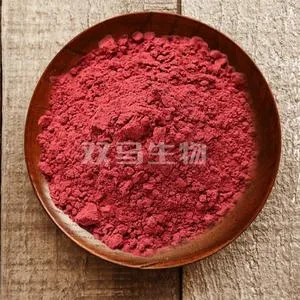Red yeast rice has been used as a toner and seasoning in ancient Chinese food culture. However, in recent years, researchers have discovered that this traditional ingredient is not only a gourmet condiment, but also a food with potential medicinal value. The latest research suggests that red yeast rice may play a positive role in regulating blood sugar.

Recently, a study conducted by a research team led by the Shanghai Institute of Nutrition and Health, Chinese Academy of Sciences has attracted widespread attention. Their research found that a natural ingredient in red yeast rice, red yeast enzyme, has the potential to lower blood sugar. This discovery attracted the attention of the medical community and brought new hope to diabetic patients.
According to researchers, red yeast enzyme is a fermentation product in red yeast rice, and its chemical structure is similar to some anti-diabetic drugs. Their experimental results showed that Monascus enzyme K can significantly reduce the blood sugar levels of experimental animals and has a certain effect on enhancing insulin sensitivity. This shows that Monascus enzyme K may affect blood glucose metabolism through multiple pathways and has potential hypoglycemic effects.
In addition, researchers also found that Monascus enzyme also has antioxidant and anti-inflammatory effects and can improve insulin resistance and insulin secretion. These effects not only help prevent the onset of diabetes but also improve blood sugar control in patients who already have diabetes.
The international medical community has also expressed great concern about this discovery. Experts from the American Diabetes Association said that this research provides new ideas and directions for the prevention and treatment of diabetes. They believe that Monascus enzyme, as a natural food ingredient, has high safety and good tolerance, and can be used as a supplement in the daily diet of diabetic patients.
Nonetheless, the researchers also pointed out that as a new antidiabetic drug, Monascus enzyme needs further clinical research to verify its safety and effectiveness. At the same time, they also called on researchers and medical workers to conduct more in-depth research on red yeast rice and its ingredients to reveal more of its pharmacological effects and potential clinical application value.
In summary, Monascus enzyme in red yeast rice may have the potential to lower blood sugar, providing new ideas for the prevention and treatment of diabetes. However, as a new antidiabetic drug, further clinical research is needed to verify its safety and effectiveness. It is hoped that through more scientific research, red yeast rice, a traditional ingredient, can bring more benefits to human health.

 English
English
 Español
Español
 Português
Português
 русский
русский
 français
français
 日本語
日本語
 Deutsch
Deutsch
 Tiếng Việt
Tiếng Việt
 Italiano
Italiano
 Nederlands
Nederlands
 ไทย
ไทย
 Polski
Polski
 한국어
한국어
 Svenska
Svenska
 magyar
magyar
 Malay
Malay
 বাংলা
বাংলা
 Dansk
Dansk
 Suomi
Suomi
 हिन्दी
हिन्दी
 Pilipino
Pilipino
 Türk
Türk
 Gaeilge
Gaeilge
 عربى
عربى
 Indonesia
Indonesia
 norsk
norsk
 اردو
اردو
 čeština
čeština
 Ελληνικά
Ελληνικά
 Українська
Українська
 Javanese
Javanese
 فارسی
فارسی
 नेपाली
नेपाली
 Burmese
Burmese
 български
български
 ລາວ
ລາວ
 Latine
Latine
 Қазақ
Қазақ
 Euskal
Euskal
 Azərbaycan
Azərbaycan
 slovenský
slovenský
 Македонски
Македонски
 Lietuvos
Lietuvos
 Eesti Keel
Eesti Keel
 Română
Română
 Slovenski
Slovenski
 Српски
Српски
 Беларус
Беларус
 Hrvatski
Hrvatski
 Монгол хэл
Монгол хэл






